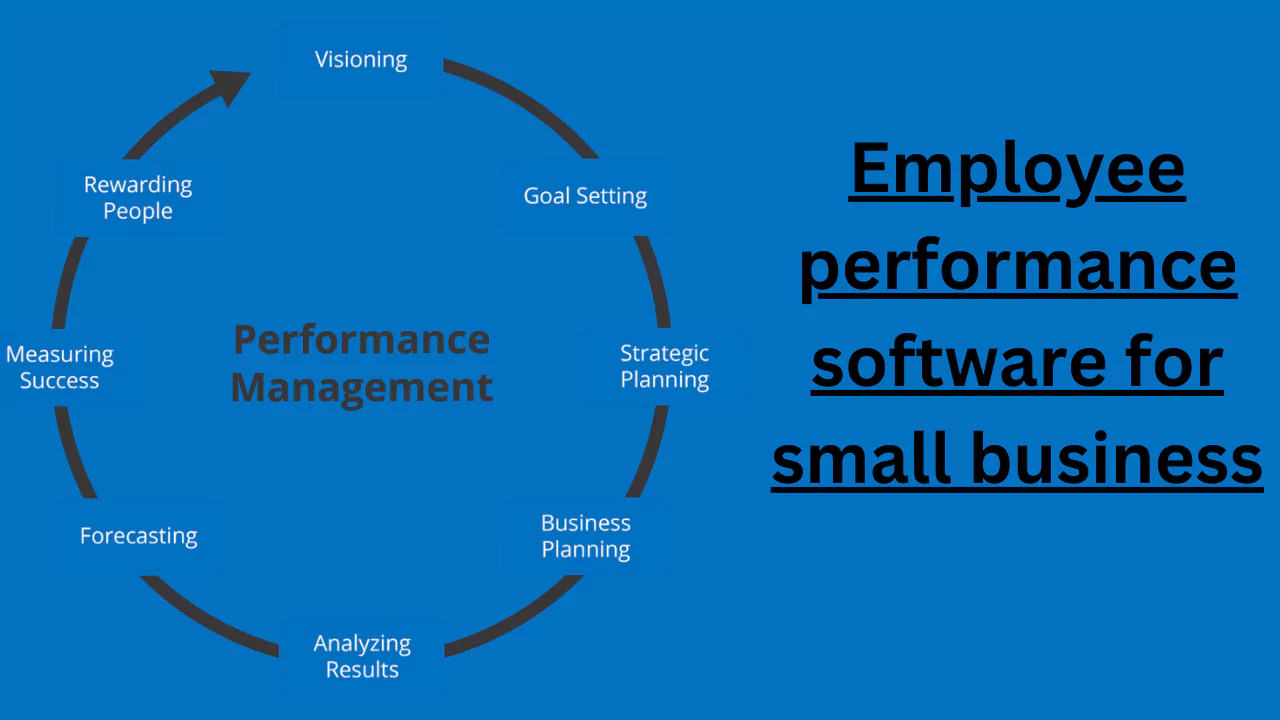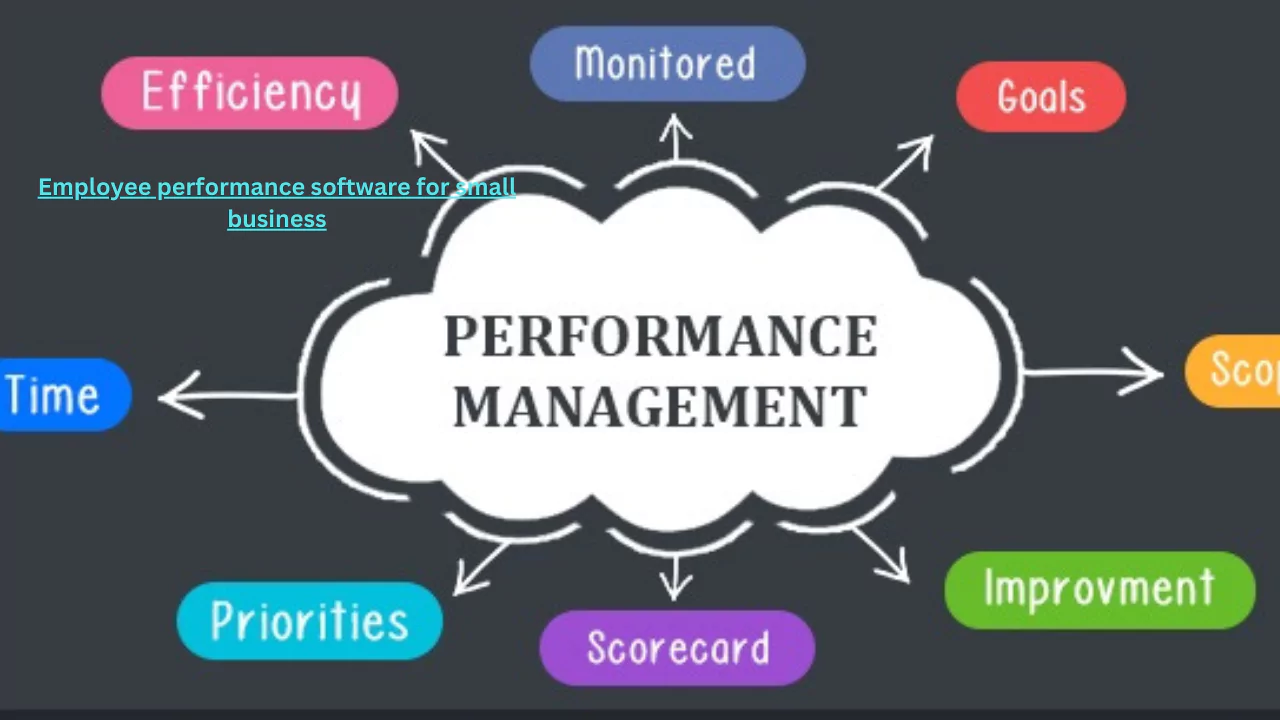Employee performance software for In today’s competitive business environment, the success of any company regardless of its size depends on the performance of its employees. For small businesses maximizing the potential of their employees is not just a goal but a necessity for survival and growth. Leveraging technology is essential to this effort and one tool that is gaining significant traction is employee performance software.
What is employee performance software?
Employee performance software (also known as performance management software) is a digital solution designed to streamline and optimize the process of evaluating managing and improving employee performance within an organization. It includes various features such as goal setting performance tracking feedback collection and performance evaluation.
Best tools for performance management:
Multiple performance management software options meet the diverse needs of small and medium-sized businesses. Potential candidates include platforms such as:
- Bamboo HR: Known for its user-friendly interface and comprehensive features Bamboo HR not only offers HR functionality but also performance management modules making it a preferred choice for small and medium-sized businesses.
2 . Zoho People: Zoho People offers customizable performance management modules and robust reporting and analytics capabilities making it suitable for businesses seeking data-driven insights.
3. Performance Pro: Performance Pro is specifically tailored for small and medium-sized businesses and offers a variety of performance management tools including goal setting competency tracking and performance reviews.
absolutely! Although some people think that performance management systems are suitable for large companies they can be equally beneficial for small and medium-sized businesses. These systems provide structure consistency and transparency in evaluating employee performance and promote a culture of accountability and continuous improvement.
Performance evaluation of small business employees:
Employee performance reviews in small and medium-sized businesses provide an important opportunity to evaluate individual contributions identify strengths and areas for improvement set new goals and align goals with organizational priorities. Unlike large companies small businesses often have a more individualized and intimate performance appraisal process encouraging direct communication and feedback between managers and employees.
There are three types of performance management systems:
Performance management systems typically fall into three categories:
1 . Traditional Performance Appraisal: This system involves periodic evaluations by managers that focus on past performance and goal achievement.
2 . 360-degree feedback: This system collects feedback from various sources such as peers subordinates and supervisors to provide a holistic view of employee performance.
3 . Continuous performance management: The system emphasizes continuous feedback and coaching facilitates real-time performance monitoring and adjustment and fosters a culture of agility and adaptability.
Track employee performance.
Tracking employee performance includes setting clear goals and expectations regularly monitoring progress providing timely feedback and documenting successes and opportunities for improvement. Employee performance software automates this process allowing managers to track performance metrics create reports and easily identify trends.
As an employee things you should not say during a performance review:
During performance appraisals, employees should avoid:
1 . Blaming others: When conducting performance reviews it’s important to take responsibility for your actions.
2 . Make excuses: Acknowledge the challenge and demonstrate a willingness to overcome it rather than shifting blame.
3. Become defensive: Constructive criticism is not a personal attack but an opportunity for growth. Keep an open mind and a positive attitude.
Understand her KPIs in employee evaluation:
Key performance indicators (KPIs) are quantifiable metrics that evaluate employee performance against predefined goals. Examples of KPIs include sales goals customer satisfaction scores productivity metrics project deadlines etc.
Conduct performance reviews for difficult employees:
When evaluating difficult employees approach performance reviews with an emphasis on empathy clarity and constructive feedback. Communicate expectations address specific concerns and provide support and resources for improvement. Highlight the impact your actions have on team dynamics and company goals and work together to create a plan to address them.
Characteristics of a good employee performance review:
Meaningful employee evaluations have the following characteristics:
1 . Specificity: Provide concrete examples and measurable results to illustrate performance. Constructive 2 2 . Feedback: Balance praise with opportunities for improvement and offer actionable suggestions for growth.
3 . Aligning goals: Aligning personal and organizational goals to foster a sense of purpose and direction.
4. Two-way communication: Encourage dialogue and active participation between employees and managers.
To write great reviews of employee performance:
When creating a performance review for an employee:
1 . Thorough preparation: Review performance data gather stakeholder feedback and establish clear metrics.
2 . Focus on results: Recognize success and highlight areas where employees excel.
3 . Address areas for improvement: Provide constructive feedback on areas that need development and provide support and resources for growth.
4 . Set SMART goals: Collaborate to set specific measurable achievable relevant and time-bound goals for the upcoming review period.
Understand the 5 things about performance reviews:
A rating of 5 on a performance review typically indicates exceptional performance that exceeds expectations and continues to demonstrate outstanding contributions to the organization. This reflects mastery of job responsibilities outstanding skills and a proactive approach to problem-solving and innovation. 
Write a performance review summary:
A performance review summary provides a concise summary of an employee’s strengths opportunities for improvement and overall performance. Highlight notable accomplishments admirable qualities and actionable goals for the future. Conclude with words of encouragement and support to motivate your employees to further their growth and success.
Examples of leadership comments:
Effective leadership comments during performance reviews include:
1 . Performance Review: Your commitment to meeting project deadlines and achieving goals was critical to our team’s success.
2 . Provide constructive feedback. While your creativity and initiative are commendable I encourage you to work on improving your time management skills to increase your productivity.
3 . Explicit support: “We appreciate your commitment to personal growth and development. Let’s work together to find opportunities to further develop your skills and advance your career.”
